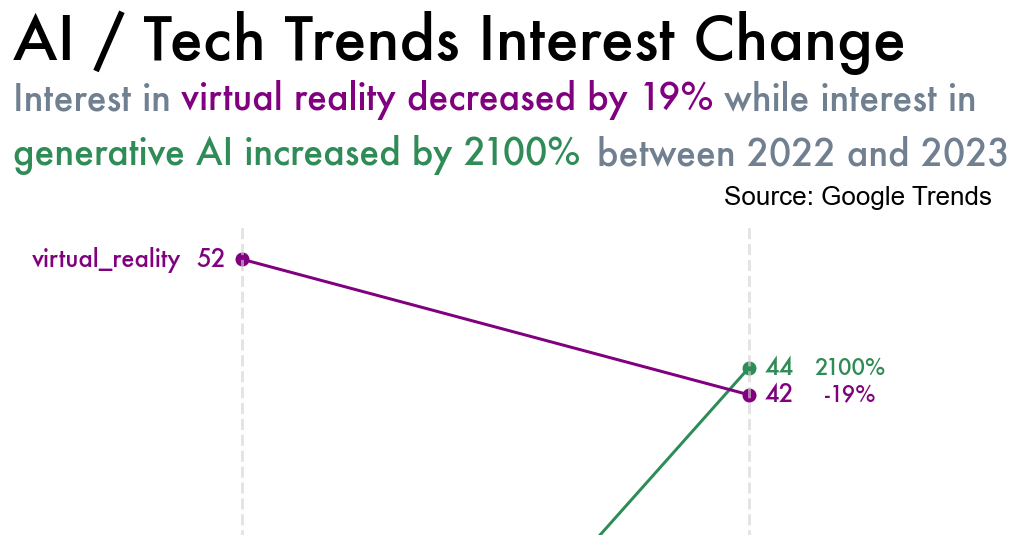Visualization Tutorials
A tutorial on how to create slopegraph visualizations for assessing technological trend shifts, such as virtual reality and generative AI.
Apprehension lingered in the air at the close of 2021 when Mark Zuckerberg gave us a glimpse into the ‘Metaverse’ — a digital universe, accessible through virtual reality headsets, that aims to create a convincing sense of physical presence in lifelike virtual environments. As a consequence, in 2022, we witnessed a resurgence of interest in virtual reality, sparking both excitement and existential dread.
While the metaverse stirred interest in 2022, it was not the only transformative force at play; the explosion of generative AI had swiftly altered the collective focus.
In Metaverse and Generative AI: Envisioning the Future of Human-Computer Interaction, Ian Hughes and Sudeep Kesh explain,
“2022 and 2023 have been particularly eventful years in certain branches of artificial intelligence. While much of AI and machine learning […] has been hidden away from broad public attention up to now, the general online population has suddenly been able to engage with large language models (LLMs) via interfaces such as OpenAI’s ChatGPT and Google’s Bard. […] This development was accompanied by the rise of generative AI for images, with the likes of DALL-E and Midjourney leading the pack. […] Some search engines have started to implement this technology. […] Like the metaverse, generative AI has the potential to affect every interaction we have with digital content and with one another.”
These last few years have been a testament to the remarkable speed at which the tech landscape evolves and trends…


